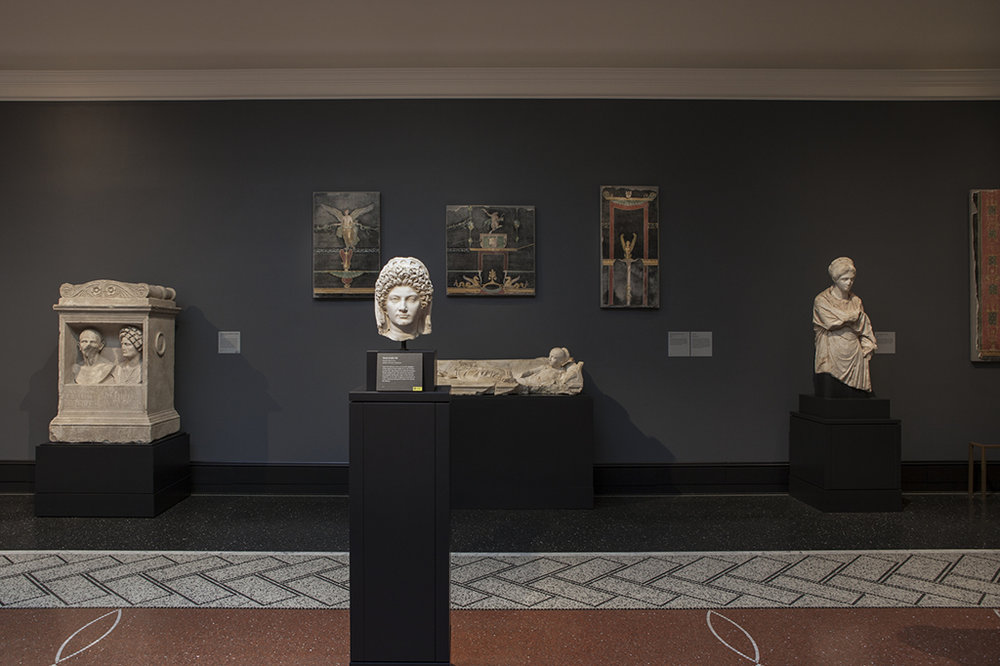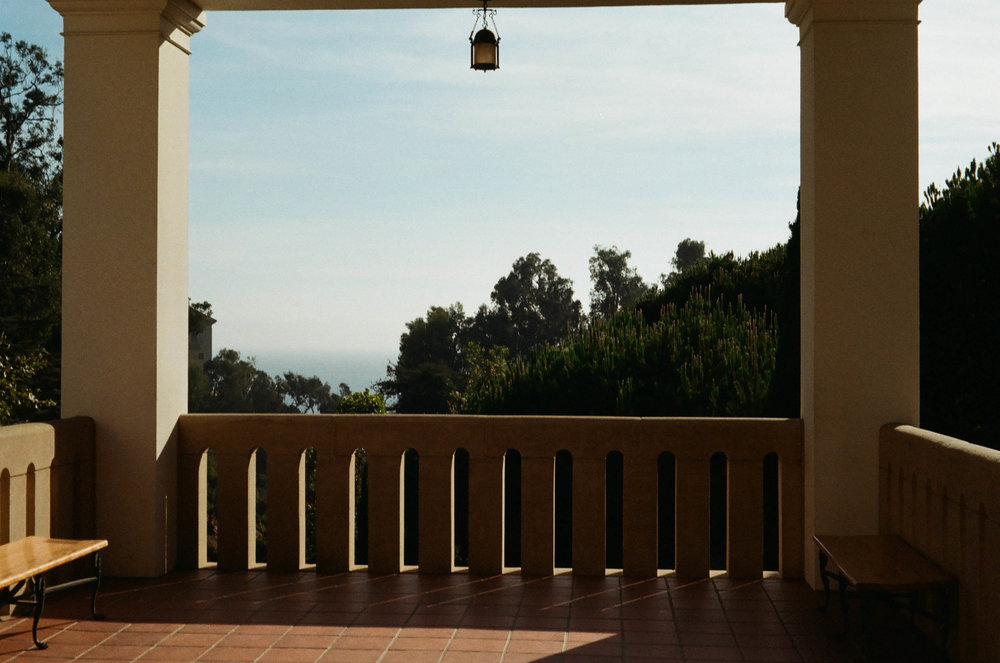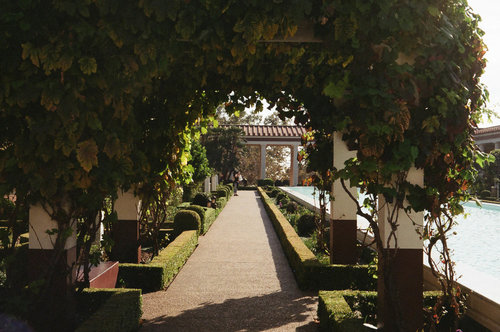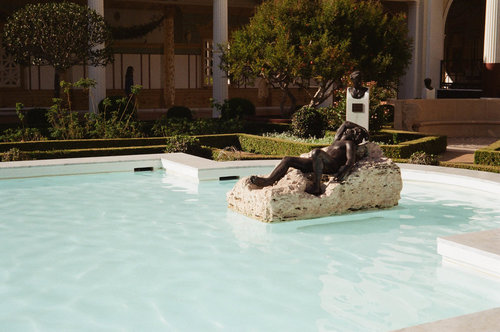
The Getty Villa, a museum inspired by the Villa dei Papyri in Ancient Herculaneum, opened its doors in 1974 and features 44,000 pieces from antiquity. A stunning display of Classical Architecture and style, it also features four separate gardens, with historically accurate flora and landscaping.
It was a beautiful sunny day, so grabbing my mid-50s Voigtlander Vito II camera and some 200 ISO film, I decided to focus on the Outer Peristyle, (A Peristyle is a courtyard surrounded by a covered walkway).
The Outer Peristyle extends from the main villa, and contains a collection of sculptures, wall paintings, Mediterranean plants, and a large reflecting pool in the middle. In antiquity, this multi-purpose space would be used for ventilation, to host guests, grow plants, or even just a casual evening stroll. Its lush greenery and the striking blue of the reflecting pool bring a sense of calm and tranquility, a resting place from the noise and rush of the outside world.


Doric Columns line the outside of the garden, easily recognizable by their sturdy and simple shapes that give a strong sense of permanence and foundation, in contrast with the growing, changing plants of the garden. Behind the columns are Frescoes featuring theatrical masks on garlands, in between painted columns. Frescoes required very skilled artists, who would have to rapidly paint on wet plaster before it could dry. The final result becomes integral with the wall.
The Classical Architecture and Design principles found in the Getty Villa became popular again in the mid-18th Century, both because of new archaeological finds of Ancient Roman and Greek architecture, as well as becoming a reaction to the Rococo movement. Whereas the Rococo emphasized asymmetry and lots of ornamentation, Neoclassicism emphasizes clean lines and simplicity. Today, Neoclassicism is enjoying a resurgence in Architecture and Interior Design. Elements of Neoclassicism are frequently combined with Contemporary, Modern, and many more styles to create a new, energized look.


The many statues and busts that live in the garden are replicas of bronze originals from the Villa dei Papyri. The statues are representative of Gods, heroes, philosophers, and star athletes of the time. Bronze sculpture is still very popular, a high degree of detail can be achieved because the bronze will slightly expand in its cast, taking on the finest details of the mold.
If you’re interested in seeing the marvelous museum for yourself, the Getty gives guided tours of its Gardens, as well as its art and architecture. At the end of October, they will be unveiling their brand new exhibition: Underwold: Imagining the Afterlife, which explores Ancient Greek and Roman art depicting their ideas of the afterlife. It will feature an enormous funerary vessel, (on loan from Italy), a companion performance based on several Great Greek and Roman Epic Poems about the descent into the Underworld, and looks to be plenty spooky.
To read more of our design content, please visit our Journal Page.